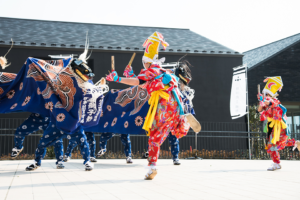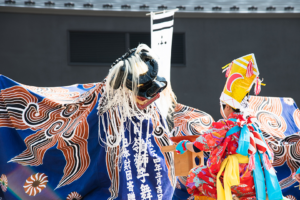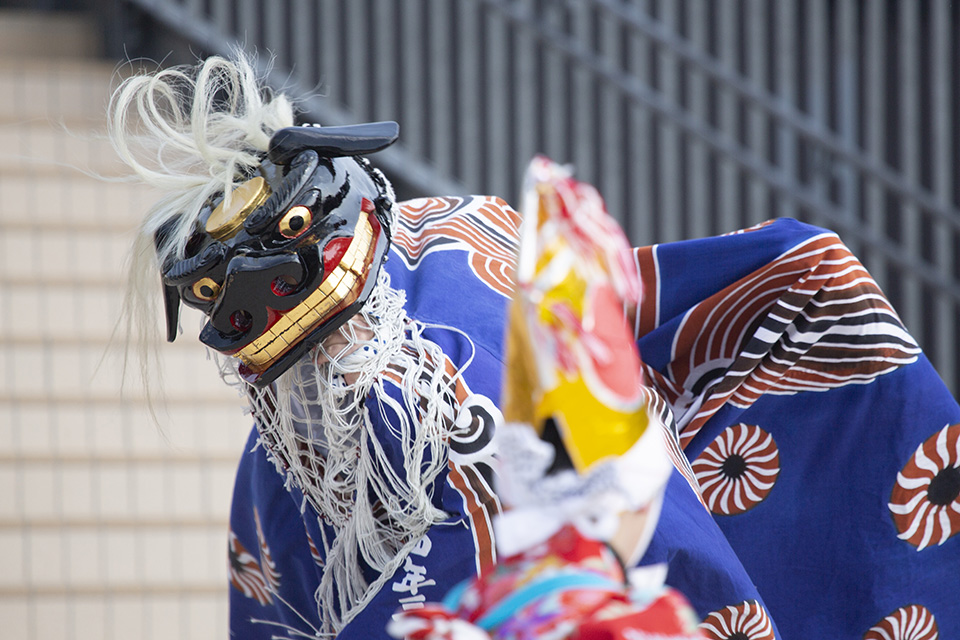甫嶺獅子舞
ほれいししまい
Horei Shishimai
団体名 : 甫嶺自治会芸能部
所在地 : 岩手県大船渡市 三陸町越喜来
種別 : シシ芸(三陸国際芸術祭過去出演団体)
三陸国際芸術祭出演 : 201420162018 大船渡プログラム2019秋 気仙プログラム
甫嶺獅子舞は山伏神楽系の一種で、安政年間に三陸地方に大津波が発生し或いは凶作が相次ぎその被害はきわめて甚大で住民の不安は言語に絶するものがあった。
その折、山形羽黒山に住む山伏達が祈祷師として立ち入り、荒御魂(獅子頭)を御神体として御祭箱(御神官)に捧持してこれを背負いこの地に持ち入れた事に始まったと伝えられている。
当地の獅子頭の元祖は、赤獅子頭(雄獅子)と言われ当時越喜来の久田の地に祀られその後間もなく葛西家に安置され大津波や凶作に見まわれた当時の住民達が獅子頭を引き出し無造作に踊り狂ったという。
しかし、現在の踊りの型がいつの時代から始まったかは全く不明である。
A terrible tsunami struck the Sanriku region during the Ansei era (1855–1860) , followed further by crop failure, causing enormous damage. Yamabushi (mountain priests) who lived on Mt. Haguro in Yamagata Prefecture arrived in the region to offer prayers, bringing a shishigashira (wild animal headpiece) – a symbol of the fierce spirit of the gods – as a host for the gods, carrying it to the region on their back inside a sacred box.
Locals of the time, who had suffered from the tsunami and poor harvest, brought the shishigashira out and danced in a spontaneous fashion. However, it remains unknown when the current dance style began.
The present-day shishimai is a valorous dance like no other, with bold vertical motions, side-to-side leaps and a biting action using the headpiece’s mouth.
【Movie】


